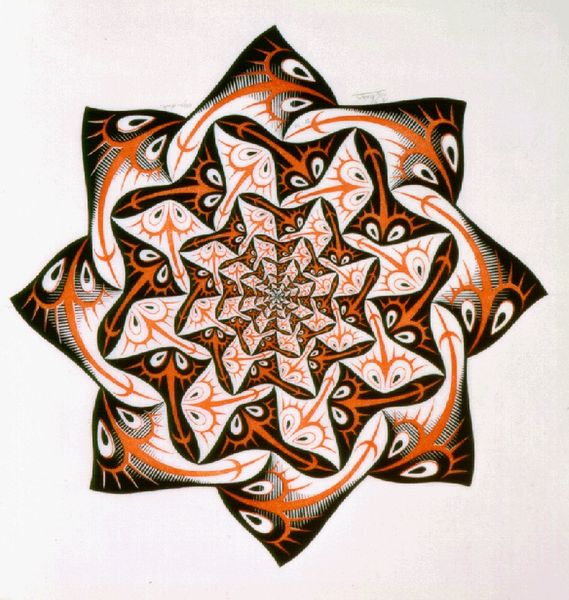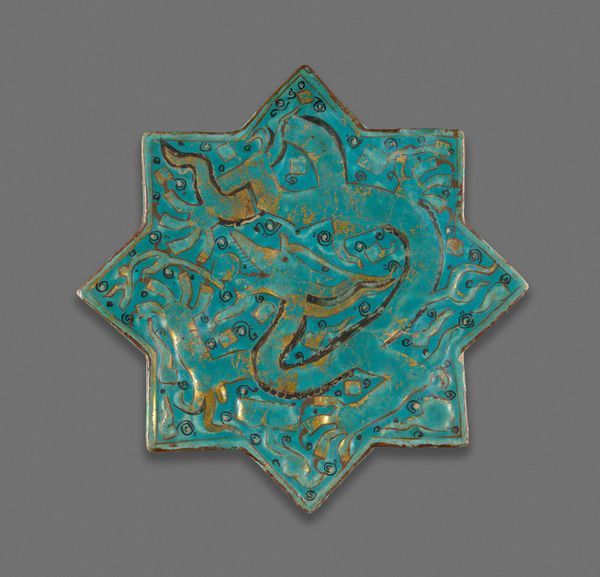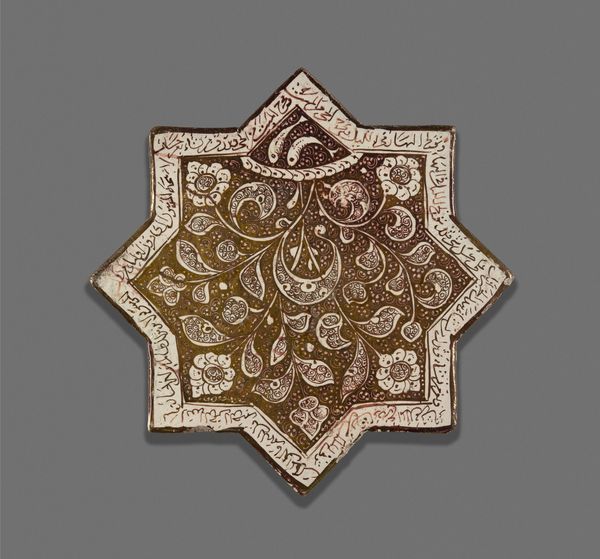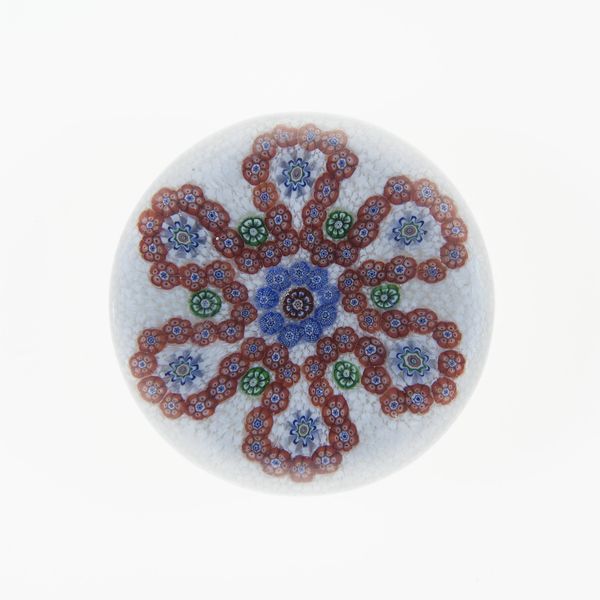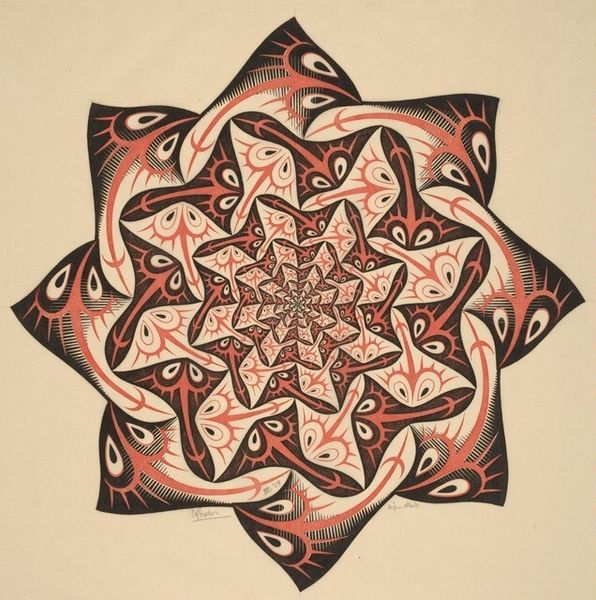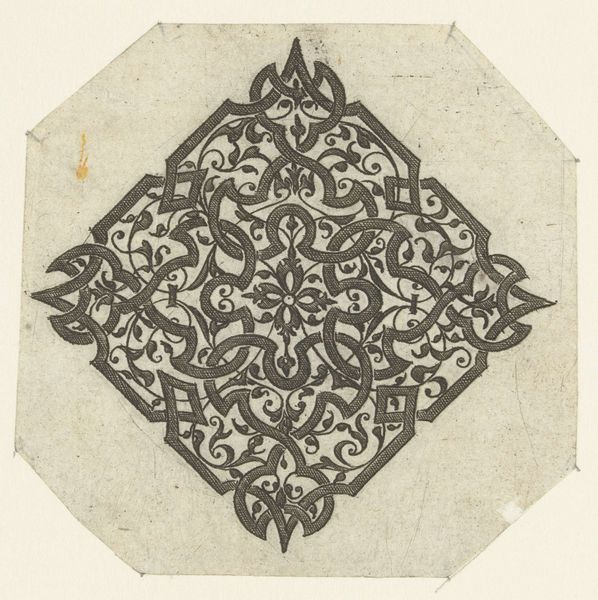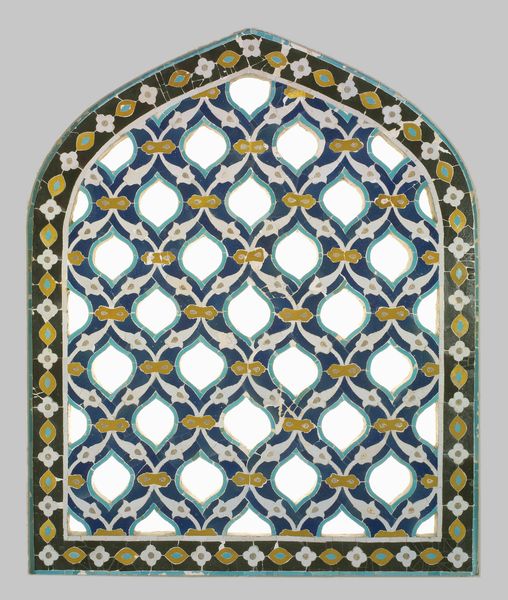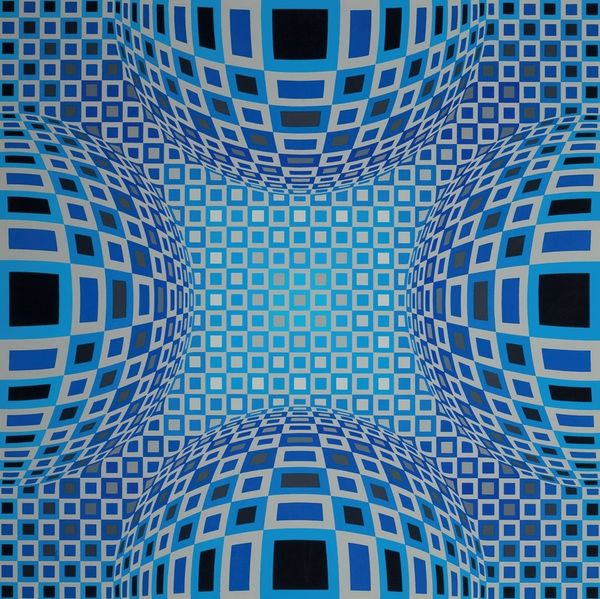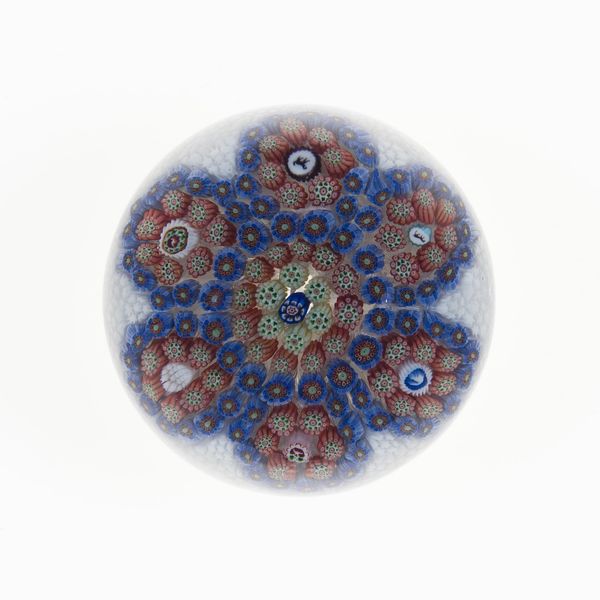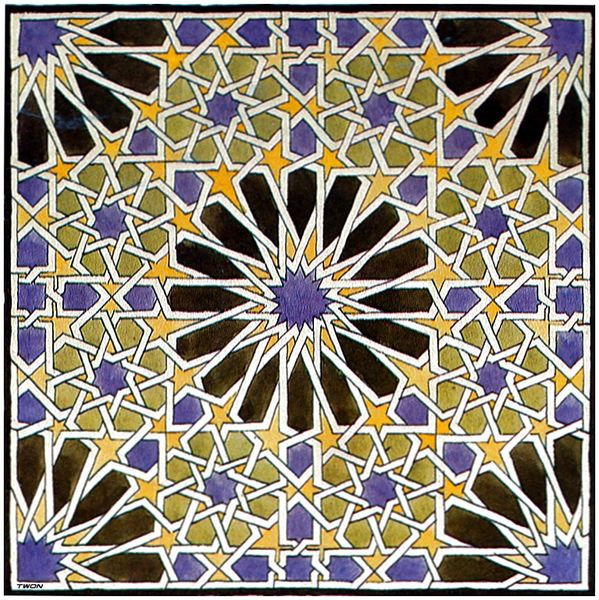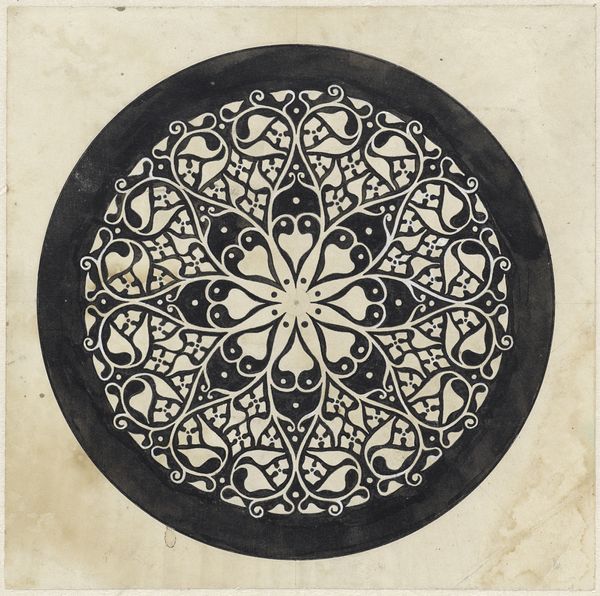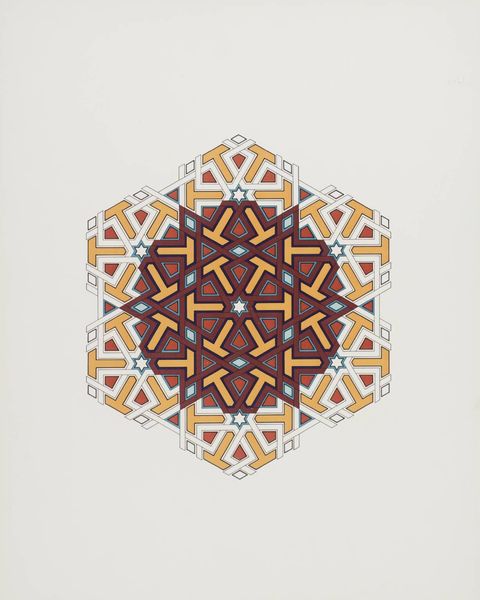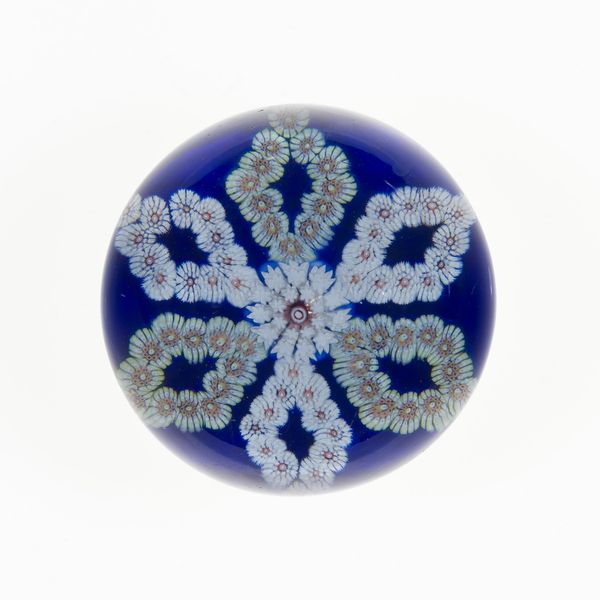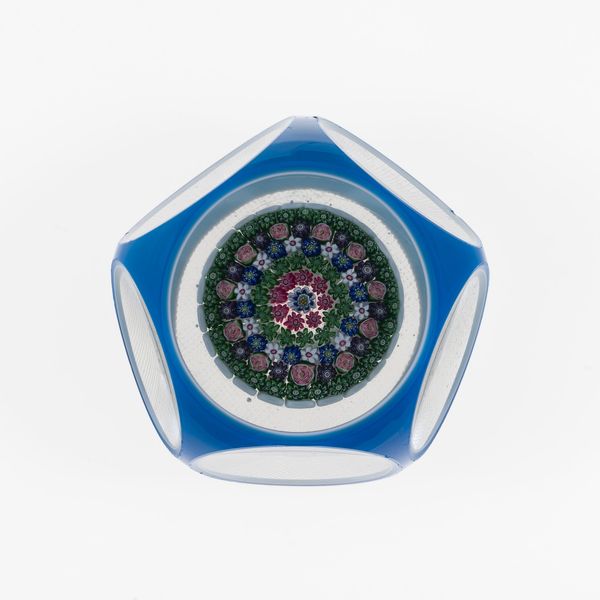
mosaic, ceramic
#
mosaic
#
asian-art
#
ceramic
#
geometric
#
islamic-art
#
decorative-art
Dimensions: 59.7 cm (23 1/2 in.)
Copyright: Public Domain
Curator: Before us, we have a ceramic mosaic from the late 15th century, aptly named "Twelve-Point Star." Editor: It feels surprisingly contemporary, doesn’t it? The geometric patterns, those cool blues and turquoise—they create such a vibrant and dynamic energy. It makes me think of modern digital art, in a way. Curator: Indeed. This particular piece is attributed to the Islamic art tradition, where geometric patterns are often used to symbolize the infinite nature of God and the universe. But to really understand it, we must consider its potential origins in Timurid or Central Asian aesthetics, popular visual languages at the time. Editor: So, it’s not just a pretty decoration; there’s a whole symbolic language at play. Thinking about its place within the socio-political landscape, who was commissioning such intricate pieces, and what messages were they trying to convey? Was this a symbol of power, piety, or something else entirely? The color choices as well seem important, specifically the blues. What were those associated with at the time, if anything? Curator: Wealth and trade, definitely. The vibrant blues come from lapis lazuli, a semi-precious stone sourced from areas far from where the piece was likely created. So its presence speaks to vast trade networks and resources. You’ve rightly pointed to questions of identity – of wealth and social class – implied by its ownership. Think, too, about the floral motifs interwoven; this connects us to ideas of paradise within Islamic art and broader connections of culture, power, and religious ideology at that moment. Editor: That's fascinating! And you know, viewing this through a postcolonial lens, I wonder about cultural exchange. How were different artistic traditions influencing each other along those trade routes, and who benefited most from this exchange? It’s tempting to get lost in the beauty, but the power dynamics and cultural interactions are critical. Curator: Precisely. I find this artwork's survival through time fascinating; the cracks, evidence of past events, remind us how power shifted, how taste transformed. The materiality becomes a part of its story too. Editor: So true. Every fracture whispers stories. Thinking about it, from decoration to symbol, from material evidence to socio-political indicator... It's incredibly humbling how such a seemingly simple shape can hold so much history. Curator: A beautiful and layered artifact, offering profound lessons if we care to listen.
Comments
No comments
Be the first to comment and join the conversation on the ultimate creative platform.
